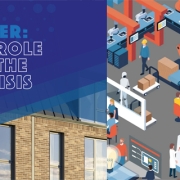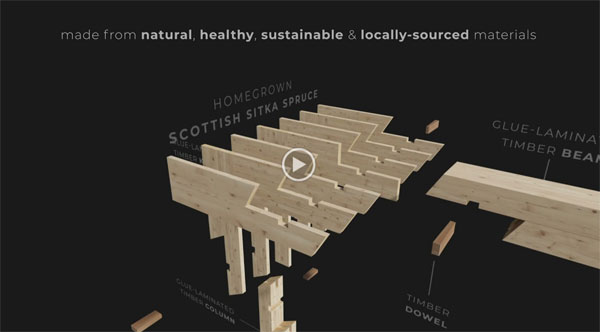Homebuilding revolution set to come of age as traditional builders fail to tackle housing crisis
Government backing for modular construction would deliver 20,000 low energy use homes across the UK – costing 55% less to heat than the average British ‘bricks and mortar’ family house
Planning permission should be fast tracked for modular housing to create homes 50% faster and 4,000 jobs in left behind areas of UK – Make UK Modular analysis
- Modular homes cost 55% less to heat than the average UK home and 32% less than traditional new builds, delivering savings of up to £800 a year for a three-bedroomed family home
- Modular homes are built 50% faster to make from start to finish than bricks and mortar homes
- Building with modular can halve emissions when building a home, cutting the amount of CO2 produced as a result of construction by up to 83%
- Modular manufacturers have already built factories in post-industrial provincial towns or cities, creating over 3,000 jobs, and delivering £700m of investment to low-growth, low employment areas
- Government should fast track the planning route for modular homes and commit to using modular for 20% of its affordable housing programme to double new jobs overnight
- Modular home construction is both more efficient and kinder to the environment with substantially less waste, 90% down on materials wastage than traditional builds
- Modular building heavily reduces the amount of transport access needed for building sites, with 80% fewer vehicle movements to sites and therefore far less local disruption and pollution of the environment
Britain’s modular construction companies are moving at speed to deliver widescale change in the housing market unseen in the UK for generations, according to new research published today by Make UK Modular. ‘Greener, Better, Faster: Modular’s Role in Solving the Housing Crisis’, shows that while innovation has left the construction industry largely untouched till now, precision engineered homes, factory-built in areas where employment is required and delivered to regions of the UK where housing is scarce, are set to revolutionise the sector and help solve Britain’s growing housing crisis.
Factory engineering means modular homes can be built to consistently high sustainability standards, delivering savings of 55% on energy consumption compared to the average UK home and cost 32% less to heat than a traditional new build. This translates to savings of up to £800 a year for a three bedroomed family home, and energy reduction rises to 60% for single or two person households living in smaller properties. Record spending by modular construction companies in Research and Development accounts for 30% of all R&D in across the whole construction sector. This investment is set to deliver even more energy efficient homes in the coming months at a time households are struggling with an unprecedented cost of living crisis.
With housing availability and affordability at an all-time low, traditional construction is struggling to deliver Government targets for 300,000 new homes a year, exacerbated by a chronic and worsening shortage of skilled construction labour. Homes England missed its 2021-22 affordable homes target by 21.5%. However, modular housing has already proven it can build new homes at pace. Modular factories have been set up in those areas of the UK where employment is needed, creating a secure labour pipeline. Employment prospects are attractive with modular manufacturers delivering quality training and upskilling for new staff, enabling much-needed homes to be guaranteed for speedy delivery to regions of the UK where housing is in short supply.
Modular manufacturers already produce 3,300 homes a year, one in 60 of all new houses in the UK and by 2025, and with the right support, this could grow to over 20,000 new modular buildings each year. Not only are these modern precision-engineered homes quicker to build than traditional homes, but with no snagging or defects it is possible for a single crane to install a house perfectly in just one day. Despite the pandemic, modular has doubled its delivery of new homes since 2017 with a contracted pipeline of 8,000 homes already in place.
Modular manufacturers have chosen to build over 40 factories in post-industrial provincial towns or cities, creating over 3,000 jobs and delivering £700m of investment to low-growth, low employment areas – a figure which could easily double with some simple Government support.
To help give the modular sector the push to achieve its full potential, Government should:
- Dedicate 20% of their programme of affordable housing provision to modular housing which has already shown it can deliver new homes fast
- Offer fast-track planning, prioritising modular and green homes in land allocation
- Raise energy efficiency standards for new housing, where modular already meets a higher criteria than traditional building, reduce stamp duty based on energy efficiency and net zero performance and require all for sale and to let homes to provide accurate date on energy bills
Collectively, these changes would drive up standards, while offering pipeline security for modular producers and helping the industry to scale up.
Steve Cole Director of Make UK Modular, the trade body for modular housing said:
“There is a housing success story in this country, and it is modular. This report shows definitively that modular is now a significant player in the UK housing market. Government must capitalise on this as opportunities to transform our broken housing market into the most sophisticated in the world do not come around every day.
“Government must accelerate modular delivery, building on the investment made and the jobs created, by removing the remaining barriers holding the industry back.”
CLICK HERE TO DOWNLOAD THE REPORT













